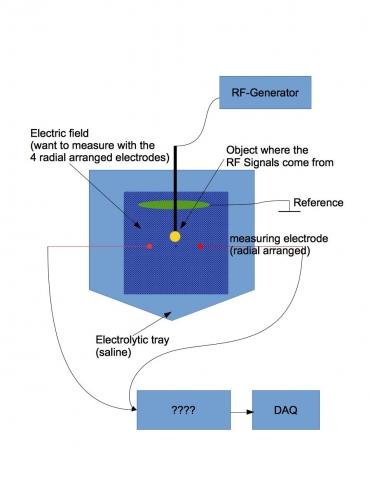Galvanic Isolation of RF-Signals (AC)
i'm doing a project at university and have some problems with isolating RF-signals by galvanic isolation.
That means that I am still searching for methods to do that.
The signals I want to measure are sinusoidal, 0.3 - 2 MHz, up to 10 V peak.
Because of the huge bandwidth I skipped the part looking for opto-isolators.
I heard that I can work with transformers but never did that before.

So I know exactly why I want the galvanic isolation but not how to reassemble and I hope you can help me with this.
Thanks
What are the impdance levels and how good must the galvanic isolation be (capacitance, working voltage across the isolation and peak/transient voltages)?
some other things: flatness of transfer curve, insertion loss, phase, maximum physical size, etc
You can use capacitive coupling, with 0.1 uF capacitors it will work over your frequency band. Or find a RF transformer, MiniCircuits have many suitable models.
Hey, thanks.
I found some RF transformers (such as T-622-X65) but I have concerns about the insertion loss...
Wouldn't this distort my signal?
Are you using sinusoidal excitation or pulse (harmonic rich) excitation.
If you use sinusoidal excitation, the the transformer may only attenuate the signal, but it remains sinusoidal. Before selecting any "isolation device" you should know the source impedance and load impedance, as insertion loss and bandwidth depends on these.
10V peak does not say anything about the power. You must specify the impedance. Check RF transformer specifications, usually RF power on 50 Ohms is limited by the ferrite core if used.
Capacitors are easier to use, again some types may have limited power handling. Use ceramic larger-size discs specified for 250 VAC, then I think no problem for over 10 W RF.
right now I only have this information about the rf-generator which generates the signals
Source of the rf-generator 100 - 120 V, 50/60 Hz, 12 A
The generated signals: it depends on which settings.. so about 0 - 600 W, 900 V, Resistance of 0 - 2 kOhm
I know that the voltage in the electrolytic tray is about < 10V, kinda big currents (10mmA- 100A)
internal resistance I think is pretty small.. << 1 Ohm cause the tray is full of saline.
and all generated signals have a bandwidth of 0,3 and 2 MHz.
Your system is quite strange, but let's do what you need. First I would look into RF generator schematic and see how the RF output circuit is designed. Maybe you do not need any "galvanic isolation". There is no DC current in the RF line that might affect the field distribution in saline tray.
The Reference and probes are important in that they pick up the RF signal from the saline. They must be coupled by capacitors as I wrote. If you need a capacitive coupling in the high-power RF line, such capacitor must be large enough to carry the high current. I guess such devices are not available on the market but are used in high-power long-wave transmitters. Some radio amateurs may know, or contact your local AM radio station technicians, they may know where to buy such capacitor.
Designing a wideband transformer is possible but it can be lossy.Ferrite cores saturate under a high power like yours and using air core may require using tuned transformers for narrow bands over your frequency range.
In all, I do not see why such high power is needed (all measurements can be done with < 1 W RF input, and probe outputs evaluated by a spectrum analyzer to -90 dBm or so). I do not see why you need the galvanic isolation as the RF generator does not probably generate other than RF signal.
The electrodes that feed the current into the liquid may result in a common mode voltage at the sensor electrodes. So a good common mode rejection may be required. Is that your reason for asking galvanic isolation?
When the isolation is because of common mode issues for the intended frequency, capacitive coupling doesn't help you.
If you can be sure the sensor electrodes construction is such that they really have low impedance (in combination with the actual salt concentration), then a ferrite transformer can be a good option. In case of low sensor output impedance, you can live with few primary turns, resulting in low coupling capacitance between primary side (sensor) and secundary side (cable towards measuring instrument).
Very likely you don't need very tight coupling when the primary inductance can be low. When tight coupling isn't requried, you can increase the seperation between primary and secondary windings resulting in less capacitance and better common mode rejection of the transformer.
When the impedance of the sensors can be high, the transformer impedance must be high also, otherwise the transformer loads the sensor resulting in error.
If you know the common mode voltage, you may also go for a differential input amplifier with relative high input impedance so you don't load the sensors (will save you mathematical corrections and calibration steps).
- need ways to access the isolation effects of GND vias in PCB layout
- Parasitic Capacitance of the Isolation Resistor of a Wilkinson combiner
- surface current and isolation of antenna
- How to calculate ISOLATION VALUE for VCO output?
- simulating isolation between antenna using farfield of one antenna as source
- Isolation transformer with network analyser
